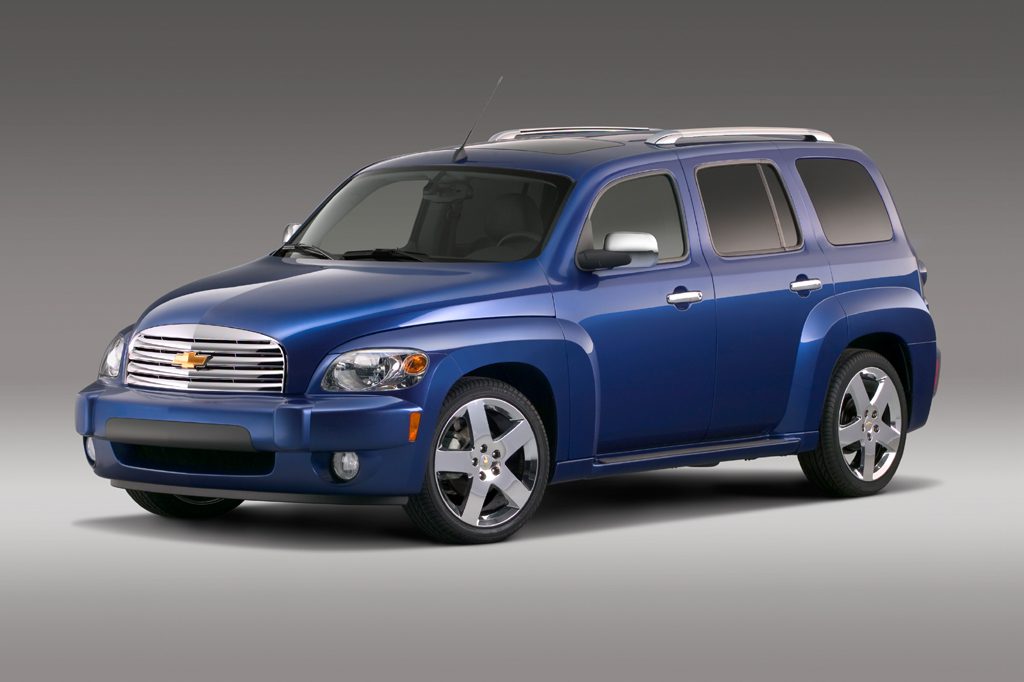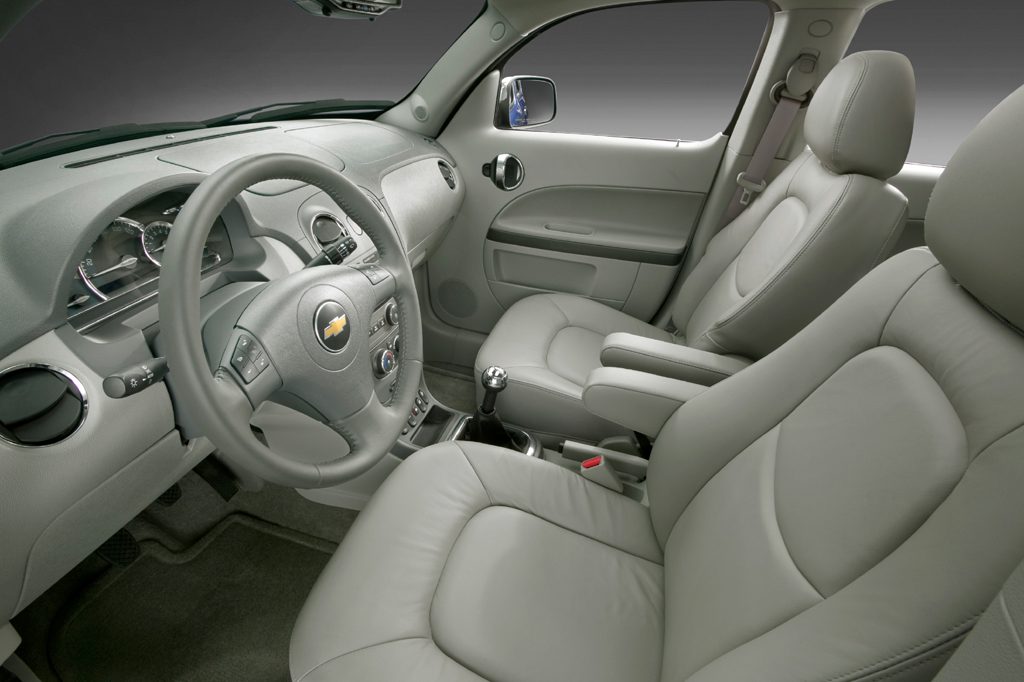| Compact car; Built in Mexico |
|
|
| Good condition price range: $6,700 – $16,500* |

2006 Chevrolet HHR

2006 Chevrolet HHR

2006 Chevrolet HHR
| Pros: |
|
| Cons: |
|
Some buyers might wish for sportier handling, and most would want smoother, more powerful engine performance. Nevertheless, Chevrolet’s retro-flavored wagon offers a practical blend of look-at-me style and utility in a not-too-large package. New-car pricing and features availability were competitive, too. Resale value beats some Chevrolet models, so used-car prices aren’t necessarily the cheapest.
Overview
Making its debut for 2006, this five-passenger compact wagon was named for its “Heritage, High Roof.” Styling was inspired by the 1949 Chevrolet Suburban. Sharing its underskin architecture with Chevrolet’s Cobalt compact car, HHR came only with front-wheel drive.
LS and LT models were offered, both with a one-piece rear liftgate. The base engine was a 143-horsepower, 2.2-liter four-cylinder. Optional on the LT was a 172-horsepower 2.4-liter four. Available with either engine was a five-speed manual transmission or a four-speed automatic. Included with the automatic was a remote engine start feature.
All HHRs had air conditioning, power windows/locks/mirrors, remote keyless entry, split folding rear seat, and a fold-flat front-passenger seat that could allow carrying longer items. LT editions added a power driver’s seat, upgraded trim, and alloy wheels. The LTs were available with a 2LT package that included the 2.4 engine, sport suspension, and 17-inch wheels versus the standard 16-inchers.
Antilock brakes were part of the 2LT package, and also were a standalone option. When ordered with an automatic transmission, they included traction control. Head-protecting curtain side airbags, OnStar Assistance, and satellite radio were available but not standard.
Chevrolet’s HHR competed mainly against the Chrysler PT Cruiser, which also featured retro styling. Additional rivals included the Pontiac Vibe/Toyota Matrix duo.
Yearly Updates
| 2007 HHR Except for revised horsepower and torque ratings, little changed for the 2007 model year. Engine output grew to 149 horsepower for the 2.2-liter and 175 hp for the 2.4-liter. |
| 2008 HHR The 2008 Chevrolet HHR made news by offering a high-performance SS model along with an antiskid system. The HHR SS model got a turbocharged 260-hp 2.0-liter 4-cylinder. |
| 2009 HHR Changes for 2009 included more standard power, the ability to run on E85 ethanol-blended fuel, and some new features. Added for ’09 was an SS version of the Panel with the same 260-hp turbocharged 2.0-liter 4-cylinder engine found in SS wagons. The 2.2-liter four standard in the LS and LT added 6 hp for a total of 155. Both it and the 172-hp 2.4-liter 4-cylinder optional in the LT could now run on E85 ethanol-blended fuel. Newly available on the 2009 HHR was a wireless cell-phone link. A rearview camera was expected to be added as an option late in the model year. |
| 2010 HHR The 2010 Chevrolet HHR lineup lost its high-performance SS Panel model. |
| 2011 HHR The 2011 Chevrolet HHR lineup no longer offers a high-performance SS model. |
